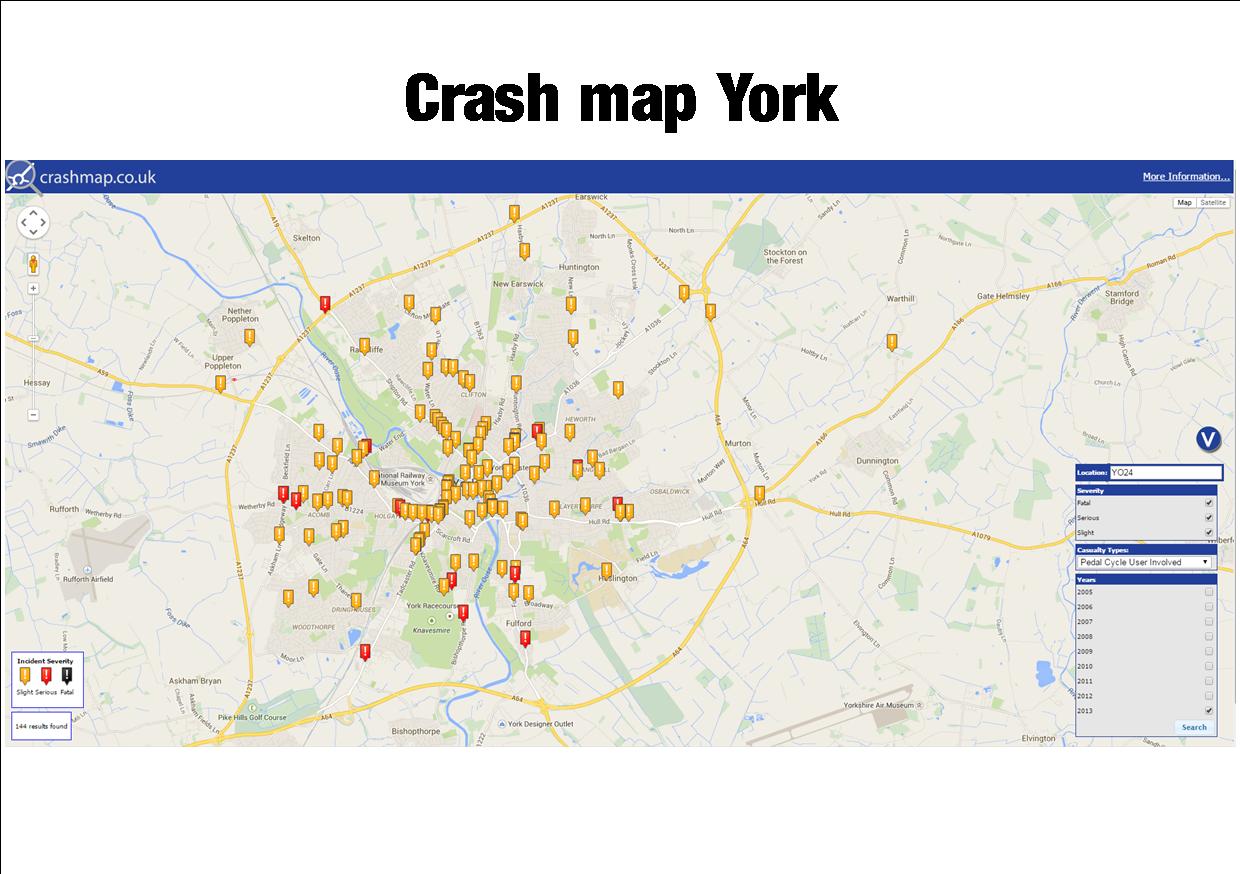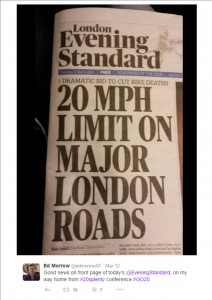In the wake of decisions in London Labour Councillors in York are now advocating, on social media, the introduction of a default 20 mph speed limit across the whole of York.

Labour were accused of sneaking through their proposed “wide area” 20 mph limits when voters last went to the polls in 2011. Their plan was in the small print of a manifesto with most residents never saw.

The scheme in London is apparently aimed at “reducing cycling casualties”. Ironically a previous study in the capital revealed that the introduction of 20 mph limits there had resulted in an increase in average speeds.
In York, most cycling accidents in result in slight injuries, occur on roads where vehicle speeds are already low and often at road junctions (click for map). Accident levels have reduced in recent years to a total of 144 in 2013 (the last full year for which figures are available) following the introduction of more “off road” cycle tracks. There were no fatalities.
Cycling was 61% safer in 2012 than it was in 2002 (per mile travelled) according to the CTC.
Labour has spent £600,000 on implementing “wide area” 20 mph limits since 2012.
Out of the 535km of roads within York’s Outer Ring Road / A64.
- 333km (62%) of road are subject to a 20mph limit.
- 202km (38%) have a speed limit of 30mph or more.
Of the 333km of roads with a 20mph limit, 275km (51% of the total) have been created as 20mph ‘signed only’ limits during the last 3 years.
Prior to this the majority of 20mph limits were traffic calmed 20mph Zones.
The council has refused FOI requests to provide information on “before and after” accident rates on the “signed only” streets in west York or to provide information on the actual effect – if any – that the signs have had on driver speeds.
It is to be hoped that all candidates contesting the Council elections on May 7th will make their policies clear on how cycling can be encouraged and made safer.
In addition electors need to know which Party’s will extend 20 mph limits and which would focus resources at accident black-spots.





